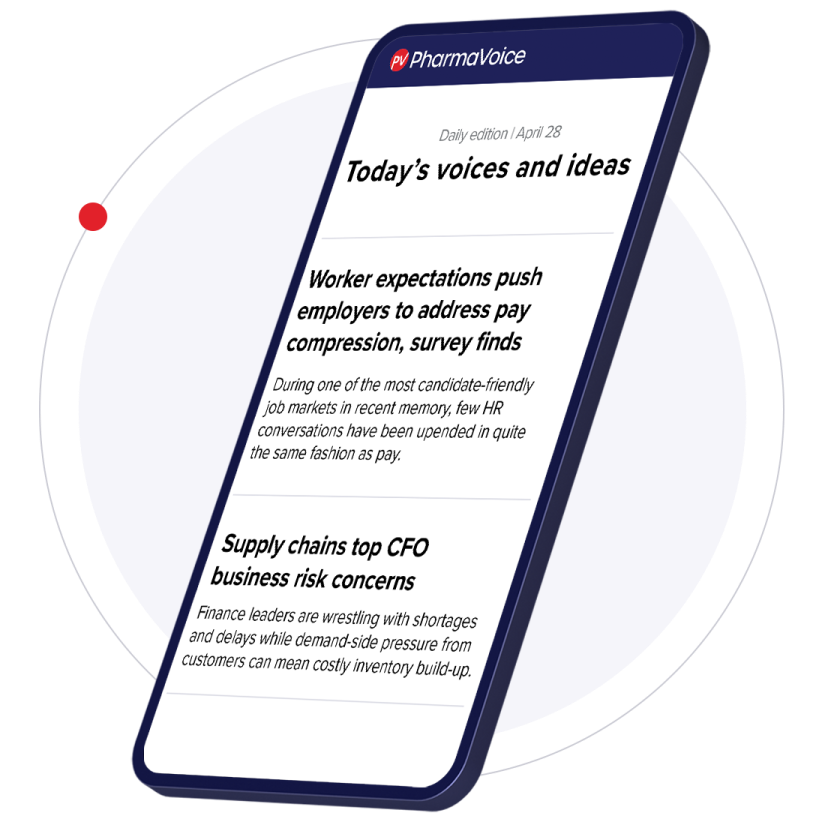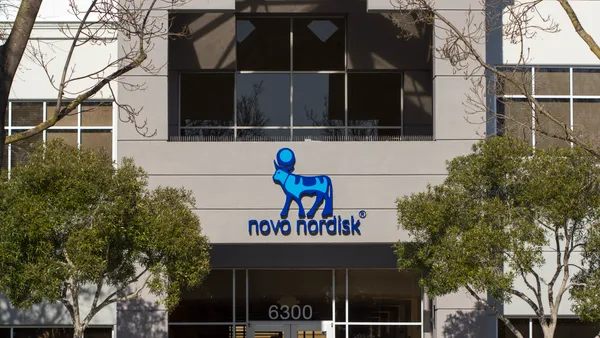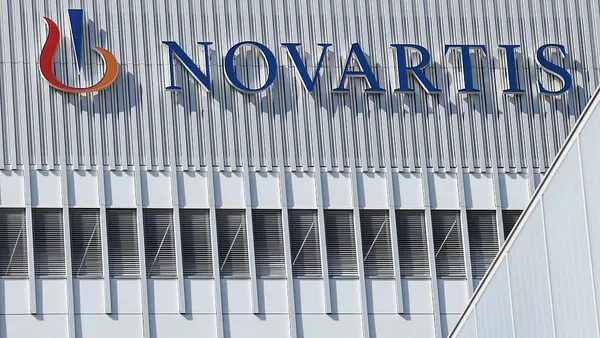By Elisabeth Pena Sales reps are coming to us and providing us with good educational information, as well as the latest research data. Mary Kay Tucker The number of nurse practitioners and physician assistants empowered with the authority to prescribe medication is increasing annually. Addressing this group of healthcare practitioners represents additional opportunities for pharmaceutical marketers to drive home their messages. NPs and PAs A Growing Sphere OF Influence onphysician healthcare practitioners have become an increasingly influencial and valuable, yet still undertargeted, audience for pharmaceutical marketers and their messages. In the United States, 97,000 nurse practitioners (NPs) and 46,200 physician assistants (PAs) are actively involved in providing healthcare. NPs are registered nurses with advanced academic and clinical experience. They diagnose and manage most common and many chronic illnesses, either independently or as part of a healthcare team. PAs are healthcare professionals licensed to practice medicine with physician supervision. PAs conduct physical exams, diagnose and treat illnesses, order and interpret tests, counsel on preventive healthcare, and assist in surgery. In most states, NPs have the ability to prescribe medications, with various levels of authority. In 13 states (AK, AZ, DC, IA, ME, MT, NH, NM, OR, UT, WA, WI, WY), nurse practitioners can prescribe medications, including controlled substances, independent of any physician involvement. All other states require some degree of physician involvement, and some states exclude controlled substances. Additionally, 43 states allow NPs to receive and dispense drug samples. Physician assistants can write prescriptions in 47 states, the District of Columbia, and Guam. Indiana, Louisiana, and Ohio do not yet authorize prescribing by PAs. Some states even authorize PAs to write scripts for controlled substances. Gaining Access As physicians become more difficult to reach in the office, the influence of nonphysician practitioners in the healthcare setting is being recognized by pharma sales reps. Greg P. Thomas, PA, MPH, VP of professional education and industry relations at the American Academy of Physician Assistants, has observed changes in sales rep interactions with PAs in the past few years. Previously, he noted that reps may not have received “credit” for a sales call if they only made contact with other healthcare practitioners in the office. He says this is changing. “In many areas, NPs and PAs may not be on the official call list, but there are some key physician offices where reps are noticing that NPs and PAs are important to their business,” says Mark S. Perlotto, executive VP and general manager at Adair-Greene Healthcare Communications. “These reps are taking advantage of those local opportunities.” Industry experts say while there haven’t been significant promotional campaigns specifically targeting nonphysician practitioners, there has been a subtle but steady effort over the past few years to reach out to this audience. “There is more activity in this area,” says Jan Towers, Ph.D., CRNP, NP-C, FAANP, director of health policy and head of the Washington, D.C., office of the American Academy of Nurse Practitioners. “Efforts to reach NPs and PAs have gradually increased as marketers have become more knowledgeable about prescribing practices of nurse practitioners.” According to the marketing group for Cipro/Cipro XR at Bayer Pharmaceuticals Corp., all healthcare practitioners with the ability to prescribe are a part of the detail strategy. “Bayer’s marketing efforts during the past five years have recognized the value of both NPs and PAs as a specialty in their own right,” says Jennifer Stahl, director of anti-infective marketing for Cipro/Cipro XR. “Because NPs and PAs are prescribers, we have been marketing to them for a number of years.” “In the states where NPs and PAs have the ability to prescribe, they are part of our marketing strategy,” says Eric Zalamea, deputy director, anti-infective marketing for Cipro/Cipro XR. “We acknowledge the fact that they play a big role in terms of partnerships with the physicians, so calling on them reaffirms the messages we give physicians.” This shift in sales-call plans has been observed by Mary Kay Tucker, MSN, RN, FNP-C, a family nurse practitioner at Wilkes Surgical Associates. “When I first started practicing, the sales reps would prefer to speak to the physicians in the practice,” she says. “In fact, some pharmaceutical sales reps could not even take our signature. Now it is almost automatic that when reps come into the office they speak with us. They seek us out, ask for our signatures, and provide us with information. They don’t expect us to be a conduit to the physician; they are actually speaking to us based on our own practice needs.” The increased attention to the nonphysician audience may also be related to the receptivity of NPs and PAs to sales reps. “We are very approachable and as a group are more receptive,” Ms. Tucker says. “Our time constraints are different from physicians. We are in the office all day, where the physician may have other responsibilities that may take him or her out of the office.” Jonathan Harris, Ph.D., deputy director, anti-infective marketing for Cipro/Cipro XR, says nurse practitioners and physician assistants appreciate the product knowledge and value-added services they get from sales representatives. “We made a decision several years ago to provide this group with educational materials that they could use with their patients,” Dr. Harris says. “We treat them as a specialty, and they respond to that.” Ms. Tucker says by providing up-to-date information relating to patient care, sales reps also save these healthcare practitioners time, which they can devote to patient care. The Bigger Picture Mr. Thomas says there is an awareness that both physician assistants and nurse practitioners are playing a bigger a role in the healthcare system, and they are groups that marketers are paying attention to. “The challenge for pharma companies is, how much specific marketing should be done to those groups versus just including them in existing or new marketing efforts?” he asks. While many view nurse practitioners and physician assistants as a different audience, marketing materials and programs do not necessarily have to differ significantly from those used for physician details and communication. “The same materials that reps use for physicians can be presented to nurse practitioners,” Dr. Towers says. “In this venue, NPs do the same things physicians do. We make the diagnosis, and we prescribe medications and treatments.” Although nonphysician healthcare providers do not go through as lengthy an education process as physicians, their backgrounds are similar enough to allow the same communication tools to be used by both audiences. All prescribing audiences need the same messages — how a drug affects a patient, how it compares with other drugs, and information about side effects and contraindications. In addition, industry experts say, marketing efforts should be positioned to meet the practice needs of NPs and PAs. Studies show that NPs and PAs tend to spend more time directly interacting with patients. “NPs and PAs spend more time interfacing, coaching, and counseling patients,” Mr. Perlotto says. “This group is more focused on patient interaction, so it is a logical extension that the marketing efforts and tools that would be perceived as beneficial by this audience should lean toward patient-education materials and product messages that focus on the benefits to patients as opposed to highly technical or highly scientific messages.” According to Bob Karczewski, general manager and executive VP at Integrity Healthcare Communications, marketing materials for nonphysician healthcare practitioners cover the same basic areas as for physicians, and discuss patient-management and compliance issues. “NPs and PAs seem to respond much more to programs that have a direct-to-patient component or patient-education component,” Dr. Harris says. For Mr. Thomas, the big issue in marketing to nonphysician healthcare practitioners is the terminology used in advertisements and promotional pieces. “Language such as ‘only your doctor can prescribe’ or ‘ask your doctor’ can be an issue for nonphysician prescribers in that it implies that no one but a physician can make decisions about prescription products,” he says. “That is very short sighted. Marketers need to move beyond that to be a bit more inclusive.” Additionally, although strides are being made to capture information about the prescribing and practice patterns of NPs and PAs, which would give marketers a clearer focus for their messages, the industry still has a way to go to address this audience. According to Mr. Perlotto, syndicated resources have not fully developed the capabilities to effectively measure the impact of NPs and PAs to the degree of precision that is available for measuring physician-prescription habits. And, despite the growing influence of the NP and PA audience, Mr. Perlotto says spending on NP/PA promotion is unfortunately the first thing that gets cut when marketing budgets are under pressure. “Marketing to NPs and PAs seems to be mostly confined to products and companies that have bigger budgets and are already heavily focused on the physician,” Mr. Karczewski says. Looking Beyond the Front Desk Despite the recognition that nonphysician healthcare providers are a valuable part of the patient-care team, some marketers still view this audience solely as a means to reach the doctor. “We are putting proposals together for a couple of clients that include going to the NP and PA as a way of getting to a busy physician who is inundated with promotion efforts,” Mr. Karczewski says. “This is being done as part of a guerrilla strategic and tactical plan.” But experts say pharmaceutical marketers who approach NPs and PAs solely from this perspective are missing an opportunity. “I would like to believe the attention we’re receiving from drug representatives is because they realize that we are a valuable part of the healthcare system,” Ms. Tucker says. “But even if the real motive is that reps have less access to the physician, that is still a benefit to us.” For companies such as Bayer, reaching this audience has its own value beyond being a link to, or replacement for, physicians. “NPs and PAs are prescribers in their own right,” Ms. Stahl says. “They are part of the team. We market to them because they make their own decisions.” Others stress that marketing efforts to any member of the staff can potentially impact the habits of others in the practice. “When physician assistants and physicians have a conversation or an interaction about a particular patient, information is shared and that sharing goes both ways,” Mr. Thomas says. “PAs and doctors have a very collegial relationship, so intuitively, PAs have influence.” Bringing physicians up to date on the latest pharmaceutical products is another important role played by NPs and PAs. “A lot of the decisions about how a practice prescribes is based on physician preferences, but the NP/PA has influence over those decisions,” Mr. Karczewski says. “NPs and PAs provide physicians with information so the whole office is on the same page with the current thinking about a diagnosis, disease, or treatment.” These discussions can be important in influencing not only a particular physician’s prescribing decisions, but those of the entire practice. “Many practice sites require that the NP/PA charts are reviewed and signed by a supervising physician,” Ms. Tucker says. “Our physician supervisors can see if we have made a change in our prescribing patterns, and this gives us an opportunity to have a conversation about our prescribing choices. We have the potential to influence treatment protocols and guidelines.” F PharmaVoice welcomes comments about this article. E-mail us at [email protected]. Eric Zalamea, Jennifer Stahl, and Dr. Jonathan Harris We have always seen nurse practitioners and physician assistants as a specialty in their own right. Physician Assistants’ Growing Role in Healthcare and Prescribing Practices 1999 2000 2001 2002 2003 Estimated number of physician assistants (PAs) in practice as of January of given year 31,301 37,821 46,002 34,192 40,469 Estimated number of medications prescribed or recommended in a given year 196 million 213 million 236 million 202 million 223 million % of PAs who report they see pharmaceutical reps 76 75 77 78 75 Mean number of pharmaceutical reps seen per week by PAs who report they see reps 7 6 6 6 6 Source: American Academy of Physician Assistants, Alexandria, Va. For more information, visit aapa.org. NPs and PAs are a very receptive audience for reps compared with physicians, who have become inundated by sales rep visits. bob karczewski Greg Thomas There is clearly an awareness that PAs are playing a bigger role in the healthcare system. A Look at Nonphysician Prescribers Physician Assistants w About 183 million patient visits were made to physician assistants (PAs) in 2002 and about 223 million medications were prescribed or recommended by PAs. w PAs practicing general pediatrics, family medicine, and emergency medicine accounted for more patient visits per week (95, 95, and 93 visits, respectively) than PAs in other specialties. w PAs practicing general internal medicine wrote more prescriptions per visit (1.5) than did PAs in other specialties. w more PAs (35%) practiced family medicine in 2002 than any other specialty. These PAs accounted for about 40% of the patient visits made to all PAs during 2002 and about 46% of the total number of medications prescribed or recommended by PAs. nurse practitioners w The average nurse practitioner (NP) is female (95%) and 47 years old. w The average NP has been in practice for 8.6 years, is a family NP (35.1%), and is involved in direct care (85.1%). w The most common NP clinical specializations are: family health, adult health, women’s health, and pediatric health. w The number of NPs in practice in the United States: about 97,000. w Estimated prescriptions written by NPs per year: 469 million, which equates to $19.4 billion. w 62% of NPs say pharmaceutical reps are a good source of information for them. Source: American Academy of Physician Assistants, Alexandria, Va., and American Academy of Nurse Practitioners, Austin, Texas. For more information, visit aapa.org and aanp.org. NPs and PAs are a viable target market in their own right. Marketers only looking at this group as a way to get in through the back door to physicians to influence prescribing decisions are making a mistake. Mark Perlotto Experts on this topic Bob Karczewski. General manager and executive VP, Integrity Healthcare Communications, Woodbridge, N.J.; Integrity, a unit of the HealthSTAR communication network, is a healthcare communications company. For more information, visit integrityhcc.com. Jonathan Harris, Ph.D. Deputy director, anti-infective marketing, Cipro/Cipro XR; Jennifer Stahl. Director, anti-infective marketing, Cipro/Cipro XR; and Eric Zalamea.Deputy director, anti-infective marketing, Cipro/Cipro XR, Bayer Pharmaceuticals Corp., West Haven, Conn.; Bayer Pharmaceuticals, a unit of Bayer HealthCare, develops innovative drug products. For more information, visit pharma.bayer.com. Mark S. Perlotto. Executive VP, general manager, Adair-Greene Healthcare Communications, Atlanta; Adair-Greene is a full-service marketing and communications agency with a focus on emerging companies, products, and technologies. For more information, visit aghealthcare.com. Greg P. Thomas, PA, MPH. VP of professional education and industry relations American Academy of Physician Assistants, Alexandria, Va.; AAPA is the only national organization that represents physician assistants in all specialties and all employment settings. For more information, visit aapa.org. Jan Towers, Ph.D., CRNP, NP-C, FAANP. Director of health policy and head of the Washington, D.C., office of the American Academy of Nurse Practitioners, Austin, Texas; AANP is the largest and only full-service professional membership organization in the United States for nurse practitioners of all specialties. For more information, visit aanp.org. Mary Kay Tucker, MSN, RN, FNP-C. Family nurse practitioner, Wilkes Surgical Associates, North Wilkesboro, N.C.
An article from


NPs and PAs: A Growing Sphere of Influence
Filed Under:
Commercialization









